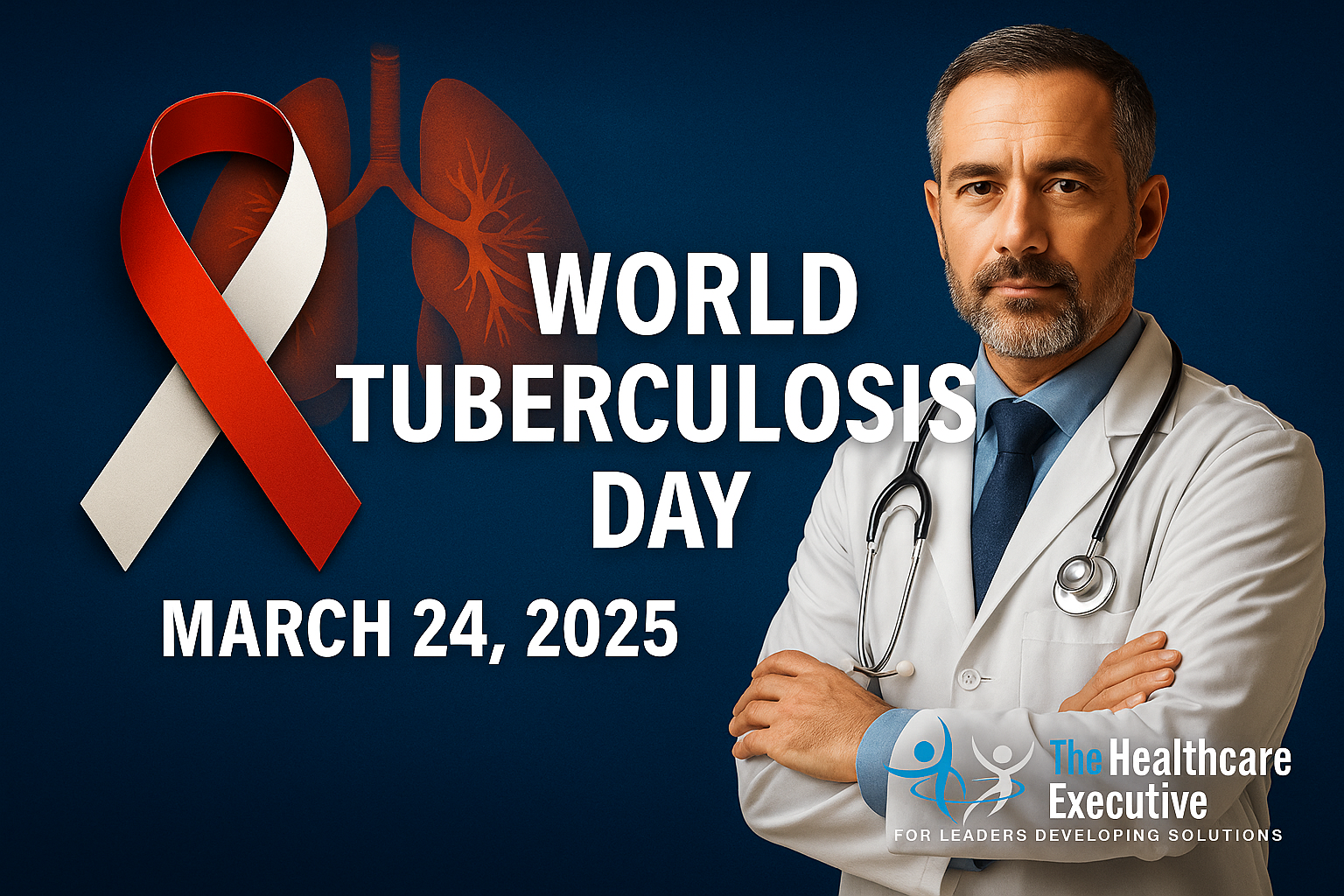World Tuberculosis Day: Executive Action Against a Global Killer

- Posted by Greg Wahlstrom, MBA, HCM
- Posted in Health Observance Calendar
Elevating Strategic Priorities for Infectious Disease Control
Published: March 24, 2025
World Tuberculosis Day on March 24, 2025, calls for a sharper executive focus on persistent public health threats that remain underfunded and misunderstood. Despite being preventable and curable, tuberculosis (TB) continues to claim over 1.3 million lives each year worldwide. Hospital executives must view this day not as symbolic, but as a strategic flashpoint. Health systems must address the intersection of infectious disease management, resource disparities, and evolving public trust. The CDC’s World TB Day campaign emphasizes “Yes! We Can End TB,” urging decision-makers to invest in better detection, treatment continuity, and public awareness. Executives at NYC Health + Hospitals have taken the lead by embedding TB education in community clinics and linking it to broader primary care strategies. These models show how C-suites can activate operational levers for impact. Effective TB response begins not in isolation, but with integrated systems governance.
At the system level, health executives must prioritize strategic frameworks that make TB screening a standard part of value-based care. This includes aligning quality incentives with testing in high-risk populations, particularly among immigrants, people experiencing homelessness, and immunocompromised individuals. At Houston Methodist, infectious disease teams are coordinating cross-departmental workflows to detect TB early and engage community health workers. These practices build on existing care coordination infrastructure—demonstrating that TB prevention doesn’t require new systems, just smarter deployment of current assets. Executives should assess whether their strategic plans sufficiently address diseases like TB that carry both clinical and reputational risk. Annual operating plans should reflect community burden—not just reimbursement opportunity. Elevating TB in operational dashboards signals strategic maturity and system accountability.
For clinical leaders and infection control teams, this observance highlights the urgency of workforce preparedness and protocol compliance. A resurgence in drug-resistant TB strains demands enhanced diagnostic tools, continued investment in staff education, and robust air filtration systems in clinical environments. Mass General Brigham has implemented airborne pathogen training modules across all departments, setting a precedent for preparedness culture. These institutional responses must be supported by boards willing to fund infrastructure and talent pipelines. Executives must also evaluate their supply chain vulnerabilities—ensuring access to isoniazid, rifampin, and diagnostic equipment critical to TB control. As hospital-at-home programs scale nationally, leaders must ensure infectious disease response protocols keep pace with decentralization. Ignoring TB preparedness isn’t just a patient safety lapse—it’s a leadership failure.
Communication strategy is another pillar executives must reassess. Health literacy, stigma, and misinformation continue to hinder TB screening and treatment adherence. Organizations like the Stop TB Partnership have built global frameworks for culturally competent messaging. Hospital marketing departments should collaborate with community organizations to amplify TB education campaigns, especially in multilingual populations. The World Health Organization’s TB Day materials offer templates for adaptation across digital and clinical channels. Furthermore, C-suite leaders should ensure that health equity and language access are embedded into the brand integrity of their institutions. A TB outbreak can erode community trust overnight—but a proactive, inclusive communication approach builds credibility for the long term.
Finally, World Tuberculosis Day 2025 reinforces that global health readiness is a local executive responsibility. U.S. hospitals remain vulnerable to imported TB cases due to immigration gaps and underinvestment in public health surveillance. The American Thoracic Society’s executive briefing on TB outlines risk factors hospitals must proactively monitor. Executives must lead on policy advocacy, forming coalitions with state departments to restore public health funding. They should also engage boards in reviewing the organization’s role in pandemic preparedness, drawing lessons from both COVID-19 and TB history. At The Healthcare Executive, we urge our readers to treat World Tuberculosis Day not as a one-day campaign, but as a year-round systems challenge. Strategic leadership in infectious disease management is no longer optional—it is a defining trait of tomorrow’s healthcare institutions.
Discover More
Explore our related insights on executive-level infectious disease strategy, community health resilience, and prevention-based care models.



